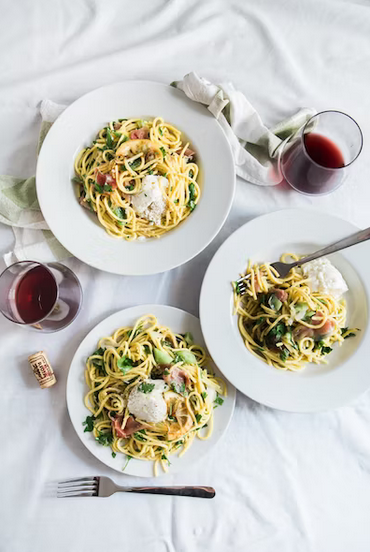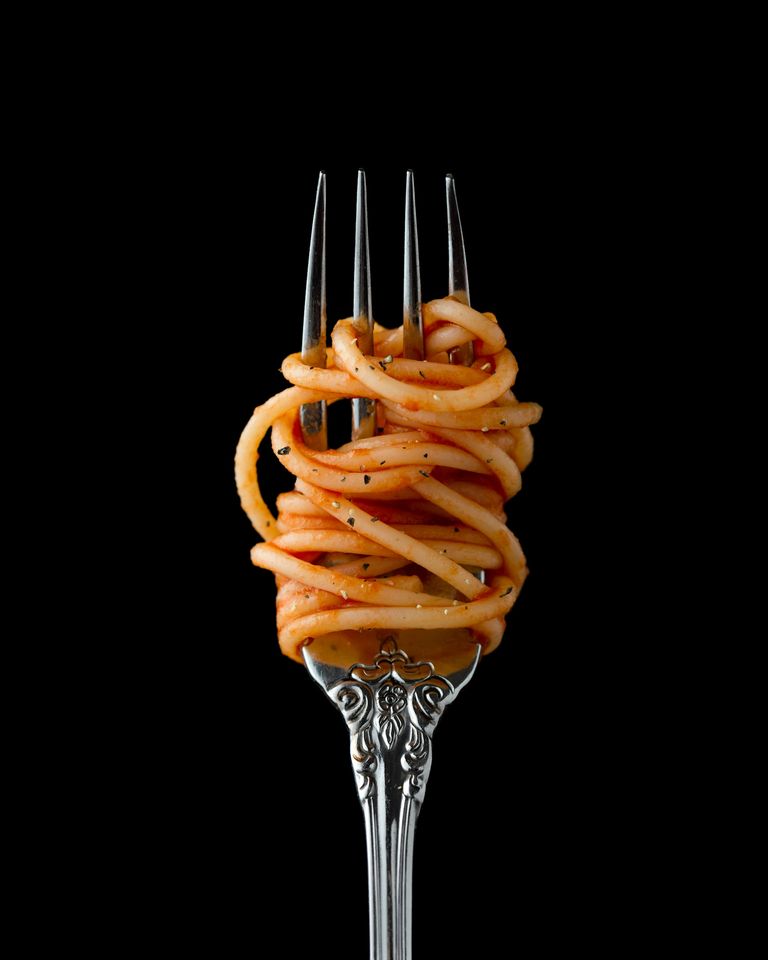
A lo largo de todas las recetas que he ido publicando en #BLURT, los amigos lectores, los que me siguen, y especialmente aquellos amantes de la gastronomía, habrán podido observar que uso, a veces, diferentes tipos de pasta (fideos) para cocinar.
Eso se debe a mis orígenes italianos, a la parte de mi vida que pase en aquel país y a la fantasía que tiene la cocina italiana en general.
Los italianos tienen una gran variedad de pastas, es decir una gran cantidad de formatos o tipos a punto tal que es difícil que repitan la misma pasta en la semana.
La receta de hoy tiene como ingrediente principal los bucatini, los fideos con el agujero en el centro.
Los bucatini son típicos de Roma, que los combina con condimentos fuertes y sencillos (cacio e pepe, amatriciana, carbonara). Se trata de una pasta de sémola de trigo duro. Los tiempos de cocción son más o menos los mismos que los de los espaguetis porque, aunque son más grandes que éstos, su agujero central favorece el paso del agua (durante la cocción), lo que permite cocerlos con bastante rapidez.
La salsa por excelencia para este formato de pasta es la all'amatriciana: una salsa a base de guanciale (manteca de cerdo) y tomate.
Los bucatini no deben confundirse con los ziti, que tienen un diámetro mayor.
Los bucatini se extendieron principalmente en el Reino de Nápoles, de hecho aún hoy en muchas cocinas del sur de Italia se puede encontrar un ferretto de sección cuadrada para extraer los bucatini.
Al músico Gioachino Rossini también le gustaba tanto este formato de pasta que mandó fabricar una jeringuilla de plata para rellenar los bucatini.

Throughout all the recipes that I have been publishing in #BLURT, my fellow readers, those who follow me, and especially those who are food lovers, will have noticed that I sometimes use different types of pasta (noodles) in my cooking.
This is due to my Italian origins, the part of my life I spent in that country and the fantasy of Italian cuisine in general.
The Italians have a great variety of pasta, that is to say a great number of formats or types to such an extent that it is difficult to repeat the same pasta during the week.
The main ingredient in today's recipe is bucatini, the noodles with the hole in the middle.
Bucatini are typical of Rome, which combines them with strong and simple seasonings (cacio e pepe, amatriciana, carbonara). It is a pasta made from durum wheat semolina. Cooking times are more or less the same as for spaghetti because, although they are larger than spaghetti, their central hole allows water to pass through (during cooking), which means they can be cooked fairly quickly.
The sauce par excellence for this pasta format is all'amatriciana: a sauce based on guanciale (lard) and tomato.
Bucatini should not be confused with ziti, which are larger in diameter.
Bucatini spread mainly in the Kingdom of Naples, and even today in many kitchens in southern Italy you can still find a ferretto with a square cross-section to scoop out the bucatini.
The musician Gioachino Rossini was also so fond of this pasta format that he had a silver syringe made to fill the bucatini.
Receta para 4 personas / Recipe for persons no. 4

- 350 g de bucatini
- 500 g de tomates cherry
- una ramita de menta
- 2 cebolletas
- un limón sin tratar
- 6 cucharadas de aceite de oliva virgen extra
- guindilla picante en polvo
- sal

- 350 g bucatini
- 500 g cherry tomatoes
- a sprig of mint
- 2 spring onions
- one untreated lemon

25'
- Lavar la piel del limón y cortarla en filetes.
- Escaldarlos unos instantes en agua hirviendo y escurrirlos.
- Lavar la menta, secarla y picarla.
- Quitar el rabito a los tomates cherry, lavarlos, cortarlos por la mitad y colocarlos en un bol.
- Añadir las rodajas de piel de limón, el zumo de limón filtrado, la menta, una pizca de sal y guindilla y el aceite.
- Dejar reposar la salsa durante una hora.
- Poner a hervir agua con sal en una olla grande y cocer la pasta en ella.
- Mientras tanto, limpia las cebolletas, quítales la parte verde y las púas, lávalas y córtalas en rodajas finas.
- Escurre la pasta, pásala por agua fría, escúrrela y viértela en el bol con los tomates.
- Añadir las cebolletas, remover y servir.

- Wash the lemon peel and cut it into fillets.
- Blanch them for a few moments in boiling water and drain.
- Wash the mint, dry it and chop it.
- Remove the stalk from the cherry tomatoes, wash them, cut them in half and place them in a bowl.
- Add the sliced lemon peel, the filtered lemon juice, the mint, a pinch of salt and chilli and the oil.
- Let the sauce steep for one hour.
- Bring a large pot of salted boiling water to the boil and boil the pasta in it.
- In the meantime, clean the spring onions, remove the green part and the barbs, wash them and cut them into thin slices.
- Drain the pasta, run it under cold water, drain it and pour it into the bowl with the tomatoes.
- Add the spring onions, stir and serve.

Fuentes / Sources:
Fuente de la imagen inicial del post / Source of the initial image of the post: Unsplash by Brooke Lark.
Fuente de la imagen final del post / Source of the final image of the post: Unsplash by Mae Mu.
Y como siempre me despido de todos con un:
And as always I bid you all farewell with a:

Una receta exquisita para los que al igual que yo, amamos las pastas.
Soy cubana y sí que he degustado variedad de fideos, pero este platillo no lo conocía. Me parece genial, podría prepararlo variando algunos elementos que no tengo al alcance. En algún momento lo intentaré 😋😋
Gracias por la receta. La cocina es mi pasión y aunque soy bastante nueva por acá, me alegra haber encontrado esta etiqueta y por supuesto, tu rinconcito.
Saludito desde Cuba 🇨🇺.
Gracias por pasar y comentar @lienladysweet amiga cubana.
Si me sigues verás que muchas de mis recetas tienen un marcado origen italiano. Primero como consecuencia de mis antepasados y segundo porque he vivido varios años de mi juventud y adolescencia en ese hermoso país, magnífico desde el punto de vista culinario.
Espero que con el pasar del tiempo podamos construir una verdadera comunidad gastronómica con marcado acento hispano.
Gracias doble, amiga. Italia es un país espectacular en muchos sentidos, principalmente su cocina, que es lo que más conozco.
Ojalá que si, que se fortalezca una comunidad hispana; por lo pronto hoy estaré estrenando la etiqueta con una de nuestras comidas.
Saludos y feliz noche.